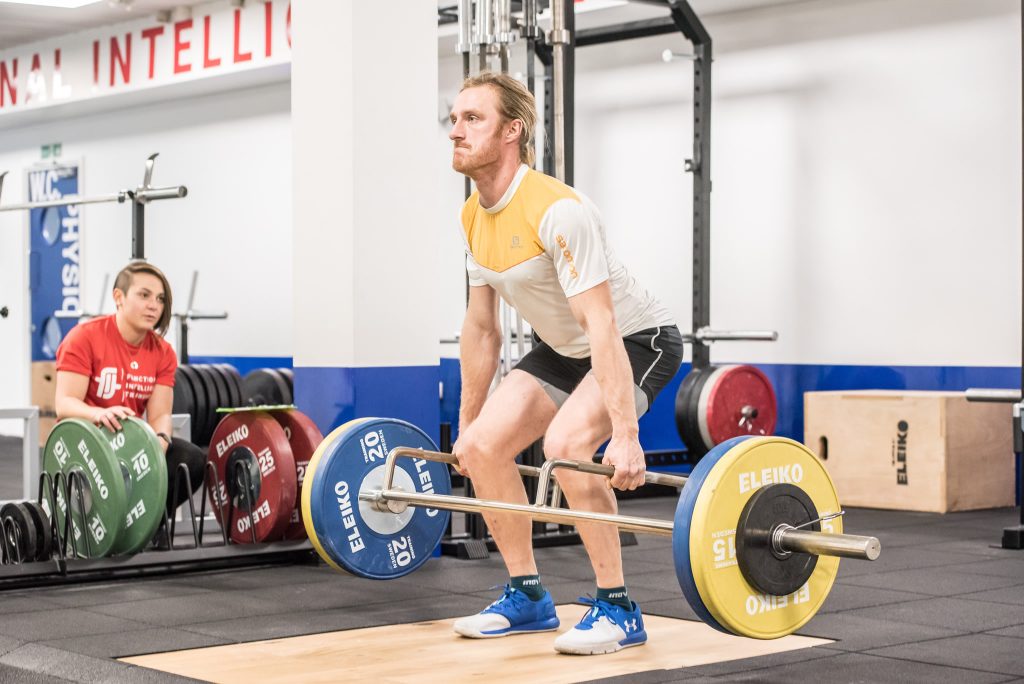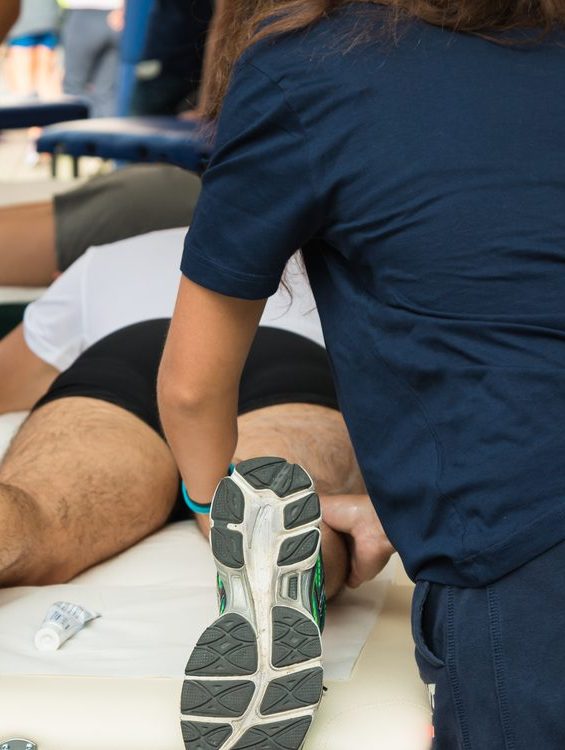What is Velocity Based Training?
Velocity Based Training (VBT) uses technology such as wearable accelerometers or linear transducers to measure movement velocity during an exercise such as a Back Squat. This provides us with information regarding the speed of the concentric movement which enables the coach to provide specific feedback and prescribe accurate training intensities.
When designing a training programme there are many training variables that can be manipulated to elicit the development of a specific physical quality. These include, exercise type and order, intensity, volume, frequency, tempo and rest. It is generally acknowledged that exercise intensity or load is the most important stimulus related to changes in strength levels and is commonly identified with relative load (percentage of one-repetition maximum, the maximal weight an individual can lift for only one repetition with correct technique). This would require the coach to regularly test the individuals 1RM for each main exercise used in their program in order to prescribe relative training loads. This percentage-based approach to calculating intensity can be problematic when we consider the time constraints and injury risk when performing 1RM testing regularly, especially with novice athletes. This method also doesn’t take into consideration the day to day fluctuations in strength and readiness to train that are caused by normal biological variability, training related fatigue or lifestyle factors like sleep, stress and nutrition.

How does VBT solve this problem? As you can see from these force-velocity graphs, as the load gets heavier, the speed slows down, this also shows the physical qualities being trained when an athlete is lifting a particular percentage of their 1RM and the corresponding velocity. We know there is a relationship between velocity and percentage of 1RM, so instead of re-testing direct 1RM for each lift, we can measure the movement velocity of a sub-maximal lift which will tell us what percentage of their 1RM they are lifting.
If we are aiming to develop a client’s ‘max strength’ in the back squat, we may prescribe a load that is 90-100% of their 1RM, or a velocity between 0.35 – 0.75m/s using exercises such as Back Squat, Deadlifts and Bench Press. Likewise, if they wished to enhance the ‘speed-strength’ quality, we may prescribe a load relative to 30-40% of their 1RM or 1.0-1.5m/s and use exercises such as Barbell Jump Squat, Trap Bar Jump and Snatch.
What are the benefits of using VBT?
We can plot an individual’s load-velocity profile and predict their 1RM in a particular exercise in order to identify and target specific physical qualities that the individual needs to improve.
The technology used provides instantaneous feedback to the athletes as they can see what velocity they are hitting during each rep and push themselves harder to hit the desired velocity which can help encourage the athlete to attempt to express maximal effort during a lift. As coaches we can use the velocity data to direct more accurate feedback and yield consistency between sessions for greater adaptation.
We can autoregulate an individual’s program as we can take into account the daily fluctuations in strength, for example, many of our clients are long distance runners and they will feel ‘fresher’ if they haven’t run 10 miles the day before. So, if a client came in feeling tired and their 1RM is lower than what it was a few days ago, we can adjust the training loads (as the velocity will have decreased) in order to match their readiness to train. This ensures that we get the stimulus and hopefully the adaptation we were aiming for.
How do we use VBT at F.I.T.?
We attach the PUSH Band to either the bar or the body (around the forearm) depending on the exercise. Each client has their own profile set up on the PUSH Band software which is displayed live on a tablet. The athlete will be required to move the bar within a specific velocity range which will determine the load they should use for a specific set. If you exceed this velocity, we may add more load to the bar or take load off if you are below the desired velocity. We may also set a 15% cut off point in each set, for example, you may be prescribed 6 reps at 0.5m/s, your rep will flash up as red if your velocity drops below 15% of your best rep. Cut-off velocities are used to terminate a set when the mean concentric velocity of a repetition falls below that value. We use an intraset velocity loss of 15% of the best rep, this means that when an athlete’s repetition velocity drops by more than 15% in the back squat, the set should be terminated to prevent them performing unnecessary repetitions and without the hampering effects of fatigue on the desired adaptation. It’s important that the athlete performs each repetition with maximum possible acceleration and speed in the concentric phase as this will affect accuracy.
We may also use the PUSH Band to test your Reactive Strength Index (RSI) using the RSI Drop Jump Test and RSI Stiffness Test. RSI is a measure of how an athlete copes and performs during plyometric activities by measuring muscle-tendon stress and their reactive jump capacity. It demonstrates an athlete’s ability to rapidly change from an eccentric contraction into a concentric contraction (also known as the stretch-shortening cycle) and their explosive capabilities during dynamic jumping activities. These tests can also be used to measure neuromuscular fatigue from training and competition.
If you are interested in incorporating VBT within your training programme, speak with one of our coaches today.



